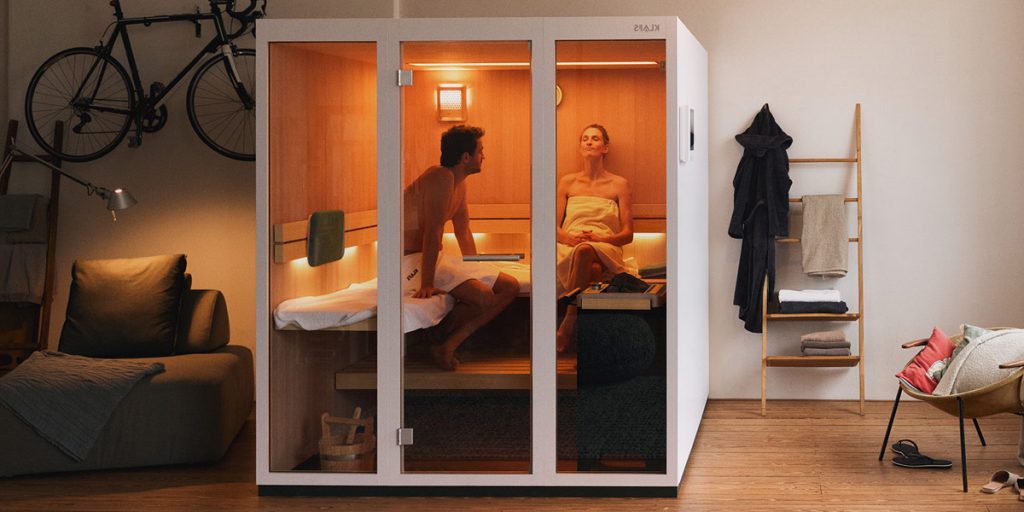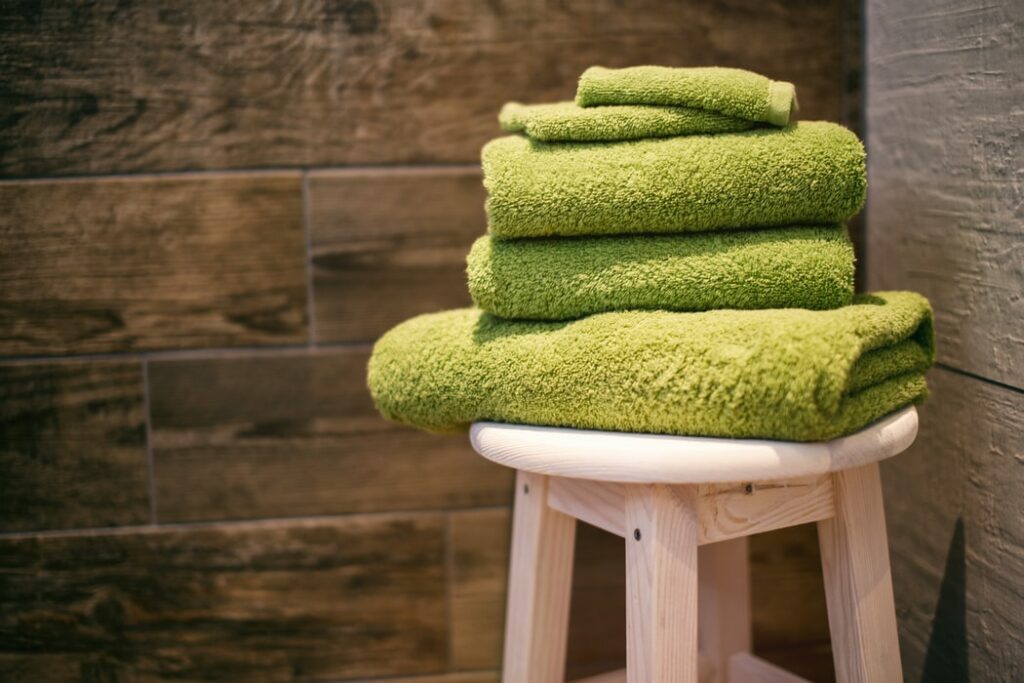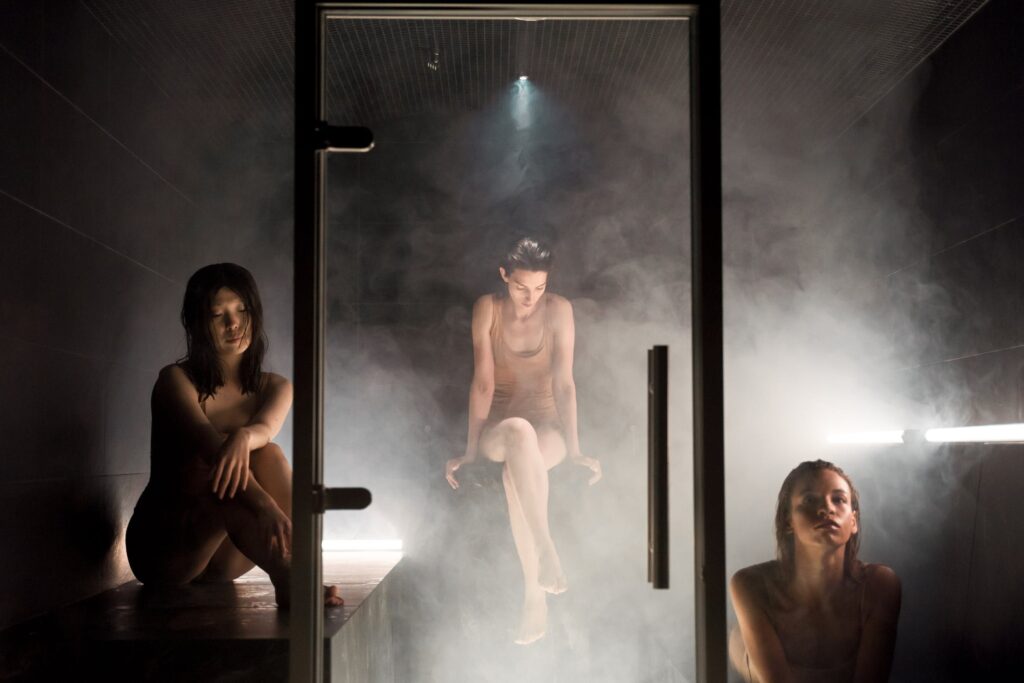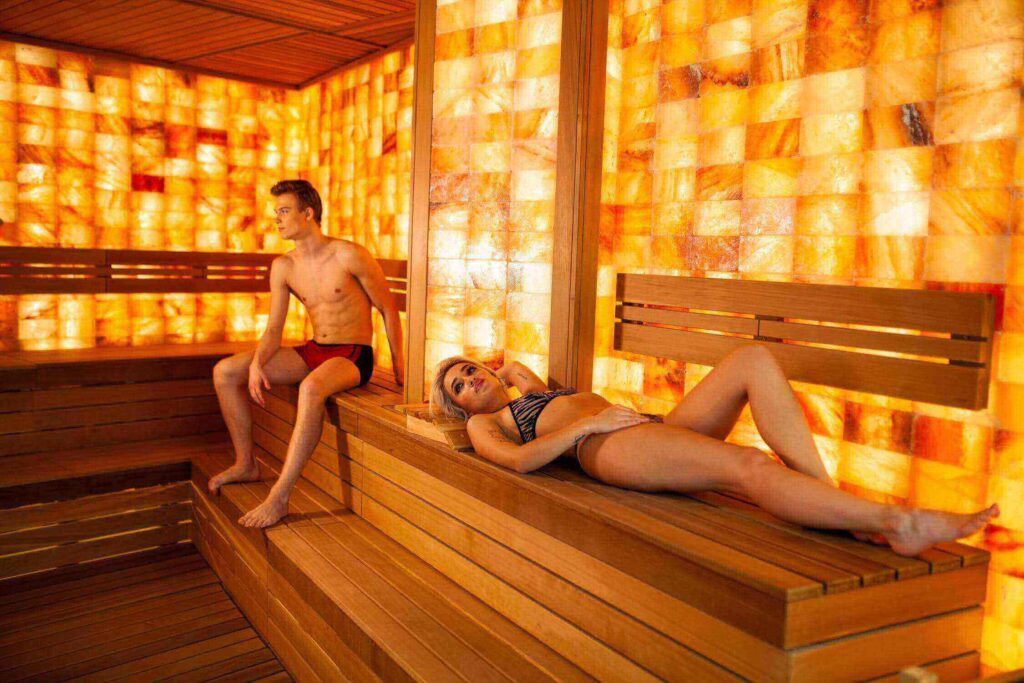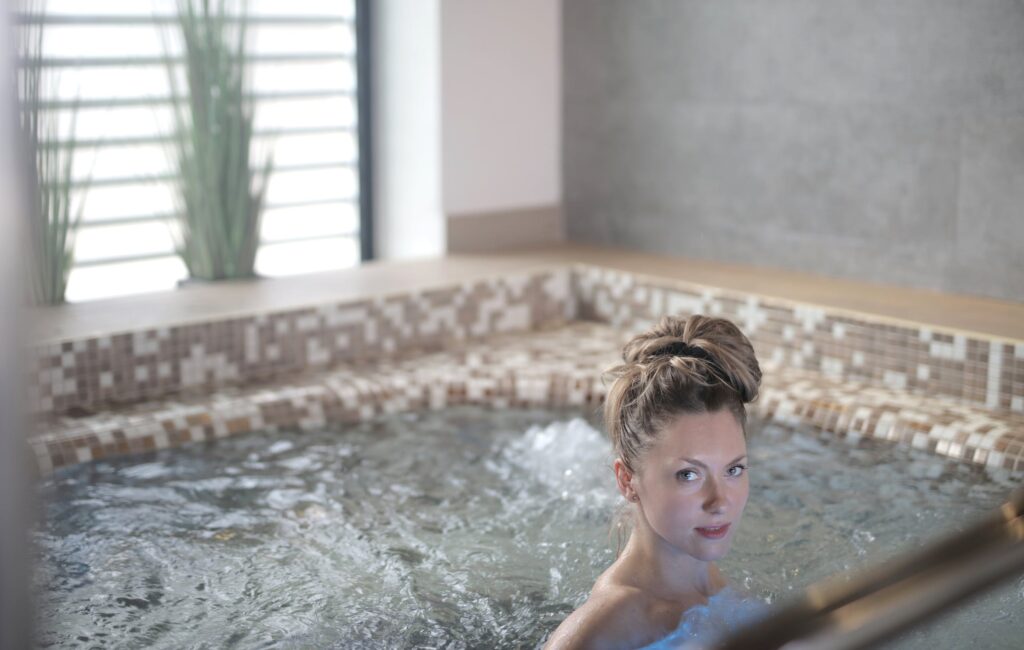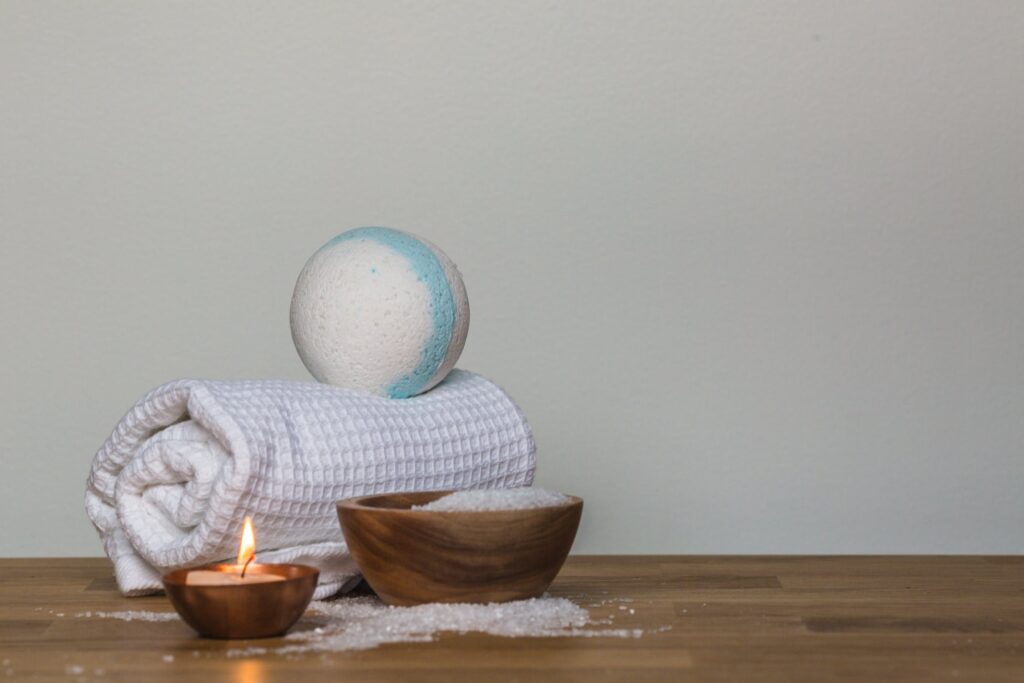Because of their adaptable construction, portable saunas can be used in various settings. These portable units are designed to perform reliably in a variety of environments. A portable sauna gives you the freedom to improve your health wherever you choose, whether in the privacy of your home or in the midst of nature.
What sets portable saunas apart is their ability to offer a relaxing experience regardless of where you happen to be. Please enter your little paradise, be it an outside location like a balcony, patio, or warm and inviting room. Floors or ceilings do not limit their usefulness, comfort, and beneficial effects. To start your road towards better health and relaxation, investigate how a portable sauna may blend in with your environment and enrich your daily routine.
Discover the transformational power of these temporary havens once their full potential is revealed. Our detailed guide to portable saunas will help you choose the perfect one for your needs and wellness objectives with professional advice and tips. Don't pass up the chance to take your downtime to the next level.
Indoor Sauna Vs Outdoor Sauna: What's The Difference?
The primary distinction between an indoor and an outdoor sauna is that the former is designed to be used in a dry, climate-controlled environment, while the latter is meant to withstand the elements. A cheap sauna vs an expensive sauna can be the difference between a sauna that can resist the outdoors and one that can't, regardless of the sauna brand. The effects of this change on saunas are:
- The cabin's increased space results from improved insulation and protection from the elements.
- The average cost of a sauna increases because more materials are required, but the cost of running an infrared sauna using the same amount of power does not change.
- Because of its increased size and material load, the sauna is heavier than its smaller predecessor.
- And the materials used to ensure that they are weatherproof and will last.

These distinctions are important because infrared saunas are electrical and will be destroyed if water or other liquid enters the wiring or heating applications. While our company's revolutionary technology greatly reduces the infrared sauna's electromagnetic radiation, even ultra-low EMF saunas can be damaged by water if improperly maintained.
The soft and delicate cedar wood used inside most saunas makes them environmentally friendly. Though lovely and fragrant, cedar leaves visible scars from even little perspiration without a towel, let alone a bucket of rain.
The greatest outdoor saunas can withstand the elements without succumbing to the wear and tear from the wind, sun, salt, rain, or hail. Because of this, a sauna cover is necessary for many outdoor saunas to prevent unsightly and functional damage.
As a bonus, outdoor saunas are a tad roomier than their indoor counterparts. The wider breadth of most structural components results from the extra material needed to protect the sensitive interior from weather conditions and the fact that this style is better suited for hosting many people.
The Benefits and Drawbacks of Using a Sauna Indoors vs.
There is more to consider than only the location when deciding between an indoor and outdoor sauna. In-home saunas are an increasingly popular amenity often included in the home's construction. In many modern homes, the sauna is intended to be accessible from any room.
Alternatively, outdoor saunas are freestanding constructions typically erected in backyards and frequently besides a pool or lake. Most homes are made of wood and have glass walls or windows so inhabitants can take in the surroundings.
Pros Of An Outdoor Sauna
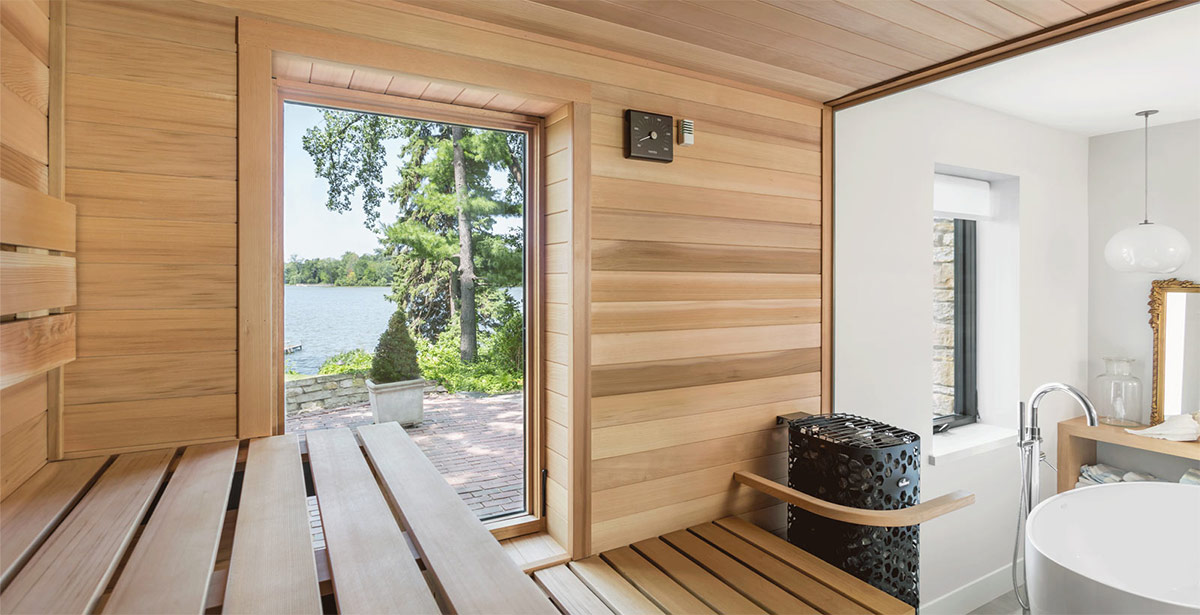
The location and design of an outdoor sauna provide a special set of benefits. The lack of internal space restrictions is one of the main advantages since it allows for more personalisation options. This also makes it simple to get adequate ventilation, which is essential for a pleasant and risk-free sauna experience. In addition, if you choose where to build your sauna, an outdoor sauna can take advantage of stunning scenery, turning your sauna time into a visual treat.
Another perk of outdoor saunas is that they can use natural lighting, especially with large windows or glass walls. By allowing in as much natural light as possible, these saunas provide a warm and inviting atmosphere and take full advantage of the beautiful scenery outside. These windows can be tinted or mirrored to provide a private space that satisfies both the requirement for and the desire for airiness.
While indoor saunas can increase the house's temperature, outdoor saunas can be used whenever you choose. An indoor sauna may not be the most practical option during the warmer summer months, but an outdoor sauna can be used and enjoyed year-round. Installing an outdoor sauna can be simplified, and the value of your home could go up because only lengthy planning and special foundations are required.
Outdoor saunas are a great space-saving option because they don't take up any room inside. The space you've freed up can be used elsewhere, like in the bedrooms or bathrooms. In addition, outdoor saunas can be harmoniously incorporated into already outdoor relaxation zones, such as alongside a barbeque or next to a hot tub.
The classic barrel shape is the most popular when it comes to outdoor saunas. However, many other shapes and sizes are available. Outdoor saunas are a popular option among those looking for a high-end sauna experience because they can be easily integrated with ventilation systems, don't need substantial planning, and can improve your health and the value of your home.
Cons Of An Outdoor Sauna
There are, however, some limitations to outdoor saunas that you should think about. There is the obvious problem of always dealing with bad weather, whether hot and bright or cold and snowy. For some, the stark contrast between the sauna's tremendous heat and the natural elements highlights the experience; for others, it can be a daunting challenge.
In addition, adding conveniences like a heater, lighting, and showers to the outdoor sauna building may require moving power or water lines. This increased complexity in logistics may increase the time and effort needed to complete the building project.
Outdoor saunas are more vulnerable to the effects of the weather and require regular exterior treatment and maintenance to ensure they retain their attractive appearance and usefulness over time. The sauna needs routine maintenance to ensure it will continue to function properly and resist the elements.
The degree of seclusion your garden has from prying eyes is another element that can affect the success of an outdoor sauna. For some who prefer a more private setting for their sauna treatments, the open-air design of outdoor saunas may be less than ideal.
Despite these drawbacks, outdoor saunas continue to be appealing. The contrast between the steamy heat of the sauna and the cool air outside can be a refreshing and revitalising experience. The anticipation of stunning vistas, such as those of a peaceful lake or a backyard pool, enhances the therapeutic effects of time spent in the sauna. Windows or an entire glass wall at the rear will help you blend in with the scenery outside.
It is also vital to consider the more pragmatic aspects of setting up an outdoor sauna, such as securing a reliable energy source and water and drainage. This is especially important if you plan to install amenities like lights, sound systems, or shower units, as doing so may be manageable in a garden.
It would be best if you seriously considered potential challenges like weather exposure, logistical considerations, and privacy concerns before deciding to install an outdoor sauna on your property, despite the fact that doing so has many potential benefits, such as connecting with nature and enjoying picturesque vistas.
Pros Of An Indoor Sauna
Interest has risen in finding practical uses for formerly underutilised spaces like basements and larger bathrooms. As a result of this pattern, novel solutions have emerged, such as installing saunas in the home. These saunas make the most efficient use of space and have many additional advantages.
The ability to use a sauna at any time of the year, regardless of the weather, is a major perk of indoor saunas. Indoor saunas can be used in any weather in contrast to their outdoor counterparts. This convenience guarantees a constant and reliable sauna experience every time.
In addition, there needs to be more complexity involved in installing plumbing and electrical for an indoor sauna. With such adaptability, the sauna's infrastructure can be set up without hiccups. Establishing the plumbing and electrical connections required for optimal operation is a breeze.
The increased seclusion that indoor saunas provide is another major perk. In contrast to their open-air counterparts, these saunas offer privacy, letting users unwind without worrying about being seen or disturbed. This feature is crucial to the overall positive experience of utilising a home sauna.
It's also worth noting that a home sauna can help warm the entire dwelling. An indoor sauna can help save money on heating bills by producing additional heat for the home, which is especially useful in the cooler months. One potential downside is accidentally overheating the house, so knowing what to expect is crucial.
Those fortunate enough to have a large, unused interior space may find installing an indoor sauna a fantastic option. Common choices for installing a house sauna include the primary suite, the basement, or dedicated fitness or spa room. The sauna can thus become a regular part of people's routines because of how well it fits into their lives in these settings.
Most indoor saunas have simple designs that make hooking them up to water and power supplies a breeze. However, expert advice should be sought for a risk-free and properly functioning installation. Potential problems can be avoided, and a seamless integration process can be ensured by consulting with specialists in the industry.
Cons Of An Indoor Sauna
When installing an indoor sauna, there is an extra layer of consideration due to the likelihood that additional building control and fire rules apply. It may be more difficult to get adequate ventilation in some locations for the sauna. Therefore, careful planning is required to maintain appropriate airflow. A waterproof or moisture barrier must be installed to protect the building against water infiltration.
While an indoor sauna's potential to heat the entire house is appealing during the colder months, it may be impractical during the warmer months. The higher temperatures could make it less appealing during the summer months.
Remember that most models have a simple assembly procedure when shopping for an indoor sauna. The importance of a secondary vapour barrier in preventing moisture-related problems cannot be overstated. On the other hand, outdoor saunas have many advantages, such as better access to fresh air and more room to move around. There are no restrictions on design while building a one-of-a-kind outdoor sauna because there are no ceilings or walls to contend with.
Is There a Prefered Location for an Infrared Sauna?
The location of your sauna depends on your preferences, demands, and preferences. If your sauna is designed for the outside and is fully waterproof, and you have the necessary installation supplies, installing it outside is a terrific option.
Make your outside space the centre of attention throughout the day and at night with the help of plants, entertainment areas, and views. Outdoor saunas allow you to bring the spa experience into the fresh air while maintaining the sauna's health benefits. Moving your sauna inside gives you access to a whole new world of wonderful possibilities.
Creating a relaxing sanctuary at home is the new normal. Personality, inventiveness, and uniqueness are all brought to this position by the freedom to design one's home. Those who want to maximise their physical potential should invest in a sauna and ice bath or a sauna and exercise machine and keep them in separate rooms.
A room can be transformed into a tranquil haven for sauna meditation by adding literature, aromatherapy, and floor cushions. If you're lucky enough to have one, your bathroom might be the crowning glory of your home, and a feature bath and view would be the icing on the cake. When it comes to the inside, anything is up for grabs, so long as you use your imagination.
FAQs About Sauna
Yes, outdoor portable saunas are typically designed to be weather-resistant. They are constructed with durable materials that can withstand various weather conditions, ensuring their longevity and performance.
Absolutely! Portable saunas come in various sizes, including compact options suitable for small apartments. You can find models that fit comfortably in limited spaces without compromising on the sauna experience.
Portable saunas usually require a standard electrical outlet to power the heating elements. Make sure to check the power requirements of the specific model you choose and ensure that the outlet is easily accessible.
Yes, most portable saunas are designed for easy assembly. They often come with clear instructions and minimal components, making the setup process straightforward. No advanced technical skills are usually required.
Absolutely! Portable saunas offer many of the same health benefits as traditional saunas, such as relaxation, improved circulation, and detoxification through sweating. Regular use can contribute to your overall well-being.
Conclusion
Portable saunas are flexible and can be used inside or outside. They can help you relax in many different places. They are made to survive the weather and cost more than indoor saunas, but they are better insulated and protect you from the weather. Outdoor saunas are more weatherproof and can handle things like wind, sun, salt, rain, or hail. This makes them better for having a lot of people.
Modern homes often have saunas built in, while outdoor saunas are usually built as independent structures in the backyard or next to a pool or lake. Outdoor saunas have benefits like more room inside, better ventilation, and the ability to use natural light. They can be used all year, which makes them more useful in hot weather. Outdoor saunas are easy to connect to ventilation systems, don't need a lot of planning, and can be good for your health and increase the value of your house.
The most common form for outdoor saunas is the classic barrel shape, but there are many other shapes and sizes to choose from. Outdoor saunas are easy to connect to ventilation systems, don't need a lot of planning, and can be good for your health and increase the value of your house.
Outdoor saunas have some drawbacks, like having to deal with bad weather and not being able to add things like heaters, lights, and showers. They are also more susceptible to weather changes. They also need regular care and cleaning on the outside to keep their good looks and usefulness over time.
People who like to be alone will find indoor saunas more appealing because they offer more privacy and security. But they are harder to set up because you need a steady source of energy, water, and drainage.
Indoor saunas can be set up in any kind of weather, which makes them more useful and easy to use. They provide more privacy, so people can relax without thinking about being seen or disturbed. They can also help heat the whole house, which saves money on heating bills.
Indoor saunas can be put in places like the master bedroom, the basement, or an exercise or spa room. They can become a regular part of people's lives, making them a popular choice for those with big, unused interior spaces. Most indoor saunas have simple designs, but you need help from a professional to make sure the placement is safe and works well.
Indoor saunas have some downsides, such as more building control and fire rules, trouble getting enough air, and the need for a waterproof or moisture barrier to keep water from getting into the building. Outdoor saunas give you better access to fresh air and more room to move around, but you can build them however you want.
The location of an indoor sauna relies on the needs, wants, and preferences of the person using it. If the sauna is made to be outside and is completely waterproof, and you have all the tools you need to set it up, it's a great idea to put it outside. Outdoor saunas can be like going to a spa in the fresh air, but they still have all the health benefits of a sauna.
Creating a relaxing sanctuary at home is the new standard, and the freedom to design one's home brings personality, creativity, and individuality to this position. Investing in a sauna and ice bath or sauna and exercise machine can help you get the most out of your body. Adding books, aromatherapy, and floor cushions can turn a room into a peaceful place for sauna meditation.
Content Summary
- Portable saunas have an adaptable construction suitable for various settings.
- They can be used both indoors and outdoors.
- These units enhance health in multiple environments.
- Portable saunas offer a relaxing experience anywhere.
- They are not limited by floors or ceilings in their application.
- Using one can be a step towards better health and relaxation.
- Portable saunas can fit into different environments, enriching daily routines.
- Indoor saunas are designed for dry, climate-controlled environments.
- Outdoor saunas are made to withstand the elements.
- The cost of an outdoor sauna is higher due to more materials.
- Sauna brands differ in their ability to resist outdoor conditions.
- Outdoor saunas have better insulation, resulting in more space.
- Infrared saunas can be damaged by water.
- Cedarwood, common in saunas, is eco-friendly but can scar easily.
- Outdoor saunas need covers to protect them from wear and tear.
- Outdoor saunas typically have more space than indoor ones.
- In-home saunas are becoming popular modern amenities.
- Outdoor saunas usually stand in backyards, often near water features.
- The main advantage of outdoor saunas is the lack of internal space restrictions.
- Outdoor saunas can utilise natural lighting and provide scenic views.
- Indoor saunas can heat up the entire house.
- Installing outdoor saunas can increase home value.
- Outdoor saunas don't consume internal space, freeing up room indoors.
- Various shapes and sizes of outdoor saunas are available.
- Weather can be a challenge for outdoor sauna users.
- Outdoor saunas need regular maintenance due to weather exposure.
- Privacy might be a concern for some outdoor sauna enthusiasts.
- Installing amenities in outdoor saunas can be more complex.
- The cool outdoor air can contrast refreshingly with the sauna's heat.
- Indoor saunas offer year-round usage irrespective of weather.
- They provide privacy and seclusion.
- Indoor saunas can contribute to home heating, saving on bills.
- Large unused spaces in homes can accommodate indoor saunas.
- Indoor saunas need careful installation to prevent moisture issues.
- They can be less appealing during warmer months due to increased heat.
- Outdoor saunas offer better ventilation and more space.
- Sauna location should be based on individual preferences and needs.
- Outdoor saunas can be the focal point of an exterior space.
- They combine the spa experience with the benefits of fresh air.
- Home design trends now lean towards creating personal sanctuaries.
- A home sauna can be combined with other wellness amenities.
- Rooms can be transformed into meditative spaces with saunas.
- Aromatherapy, literature, and cushions enhance the sauna experience.
- The bathroom can be the highlight of a home with an added sauna.
- Indoor saunas offer limitless design possibilities.
- The right location enhances the overall sauna experience.
- Infrared saunas are electrical and sensitive to water damage.
- The cedar wood in saunas is beautiful but can stain easily.
- Outdoor saunas often need protective covers against the elements.
- Portable saunas integrate seamlessly into different environments for relaxation.

